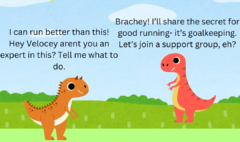Why mental wellbeing should be taught in schools?
Why mental wellbeing should be taught in schools?

Being a student of Vipassana Meditation I have experienced this personally after returning from my first few 10 day courses (common with many first timers). Amidst frowns or raised eyebrows, a typical question people asked- “Is everything ok?”, “Are you well?” etc. The questions are well-meaning but come from perceptions deeply rooted in the ignorance that the mind is not something we need to work at on a daily basis, especially if we are doing well in life, or that meditation is odd, or different from normal.
Fortunately meditation and mindfulness have become more mainstream over decades thanks to the work of great teachers, the medical industry and even some apps like Headspace that have popularized it.
Labeling
We normally take responsibility for our mental health quite late in our lives. We hit the gym or go mindfulness, yoga, pranayam or other courses only after struggling with some mental unwellness for a long time mostly when some adversity has struck in the form of loss, death, disease, etc. When we finally land up there to get the help we need, a storehouse of knowledge opens up for us- lots of techniques about the mind, getting acquainted about erroneous ways of thinking, etc. However most of the times it is too late. Then we have no choice left but to rush to therapy sessions or sometimes even psychiatry.
The problem with therapy or psychiatry is that they are not able to be joyful learning experiences at all. Because the knowledge of various cognitive and emotional techniques comes with caveats-
1. A clinical label
2. An inherent message segmenting us from others- “Only ‘you’ need to know about these therapeutic techniques, others are all Ok or don’t need the knowledge.”
This is really sad, almost like a punishment. It is as if we are singled out and in the spotlight for the wrong reasons. It completely mars the learning process because all we want to do is continue doing what everyone else is doing to be happy. We want to belong.
Where is the joy of learning?
The best learning happens when we don’t know that we are learning. It happens in a favorable environment as a natural process instilling joy and curiosity, also a collective process that elicits discovery and discussions. We may cringe when we hear about a disorder in the context of a patient or a hospital, or a strong spiritual discipline followed by a tradition but we are excited to watch the same in movies or read about it in a story. It is the environment or context in which we learn, the social acceptance and the togetherness of it all that makes a difference in our receptivity and perceptions.
The secret is in being there “early”
We should start as early as school with instilling a sense of enquiry around basic concepts of cognitive techniques or mindfulness and questions like these- “What is mind”, “How does it work?”, “How do we identify dysfunctional patterns in our mind?” or “How can we keep our mind strong?” or “How to work with feelings?” should be part of day to day discussions.
Learning about the mind should be an exciting journey for all, keeping the knowledge universal and label-free.

Archana Bahuguna
Related Posts
Goalkeeping or being focused in the present
Inspiration for Vipassana meditation
Is mindfulness scientific?
How to approach OCD from a mindfulness perspective
How to build emotional intelligence (EQ) at work?
Search
Categories
- Anxiety (1)
- Beliefs (1)
- Breath observation (1)
- Change (1)
- Compassion (1)
- Concentration (6)
- Disease (1)
- Disorder (1)
- Emotions (8)
- Empathy (1)
- Exam anxiety (1)
- Feelings (4)
- Happiness (1)
- Learning (1)
- Limitations (1)
- Logic (1)
- Meditation (5)
- Mental disorders (4)
- Mindfulness (10)
- Narcissism (1)
- OCD (1)
- Pleasing others (1)
- Psychiatry (1)
- Python tools (1)
- Resilience (2)
- School (1)
- Self view (1)
- Social support (1)
- Speed (1)
- Student (2)
- Students (1)
- Teens (1)
- telehealth (1)
- therapy (1)
- Thoughts (6)
- Vipassana (3)
Latest Posts








